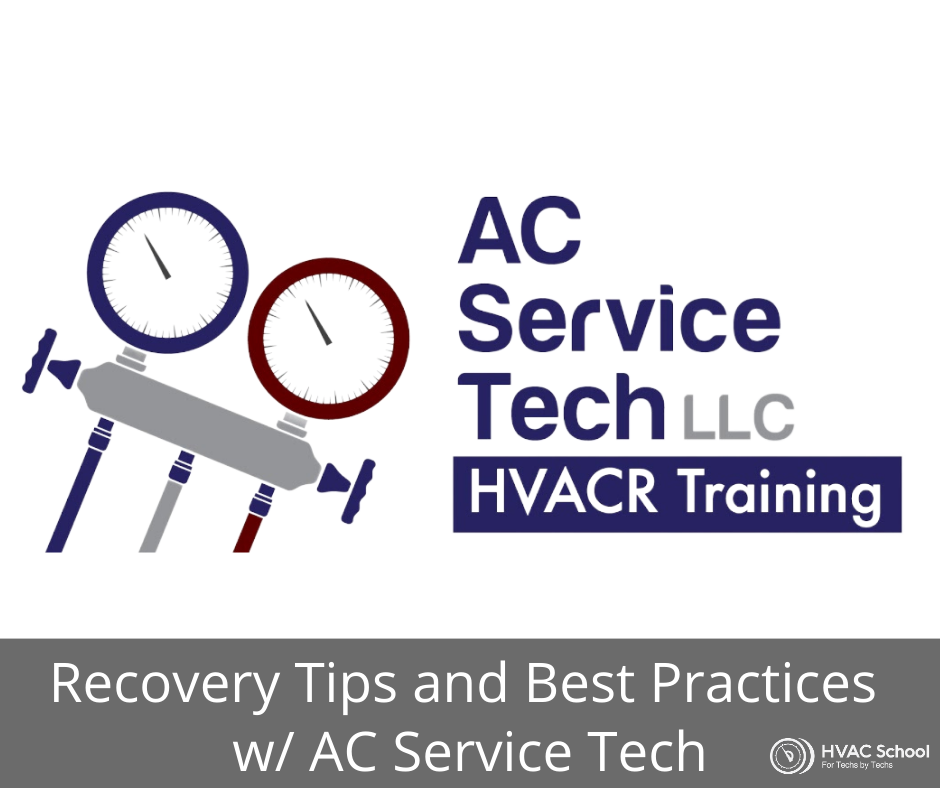Recovery Tips and Best Practices w/ AC Service Tech

In this podcast episode, Bryan and Craig Migliaccio (AC Service Tech) discuss some HVACR recovery tips and best practices.
When you select a recovery tank, you need to know which refrigerant is in the tank. So, it's a good idea to make sure you label each recovery cylinder. You don't want to contaminate refrigerant in the recovery tank, use a recovery tank with contaminated refrigerant, or have too much air inside the cylinder. If the tank is empty, you'll have to pull a vacuum on it before you use it for the first time.
Tank fill can be a tricky business. You have the tare weight and water capacity, which you can use to determine the maximum refrigerant fill (factoring in the refrigerant's specific gravity at 130 degrees and the 80% capacity). Weighing in the charge is important so that you stay within an appropriate range as not to build up hydrostatic pressure and risk injury.
Recovery machines will give you the quickest recoveries. (When using one of those, you can extend your machine's life by using a filter drier during recovery.) However, you can also keep the pressure of the tank low during recovery; one of our best tips is to put the cylinder in an ice bucket during recovery. Regardless of what you use for recovery, you ALWAYS want to use a scale to weigh the tank as you recover refrigerant.
Craig and Bryan also discuss:
- Hydrostatic pressure
- Figuring out the refrigerant type in an unmarked tank
- Contamination
- Core removal
- Waterproof scales
- Leaks and low refrigerant charge conditions
- Pulling from the liquid and suction lines
- De minimis venting
Check out Craig's website at acservicetech.com.
Learn more about Refrigeration Technologies HERE.
If you have an iPhone, subscribe to the podcast HERE, and if you have an Android phone, subscribe HERE.
Author:










Comments
To leave a comment, you need to log in.
Log In